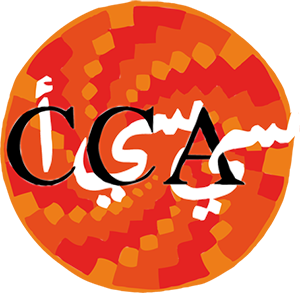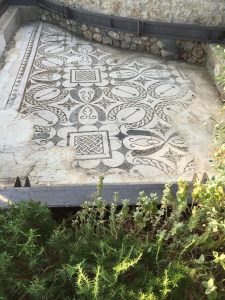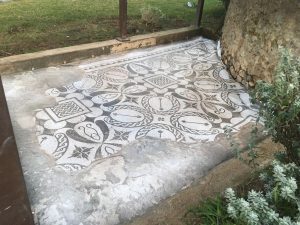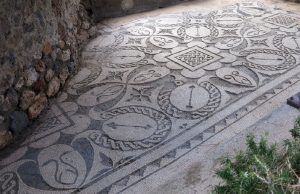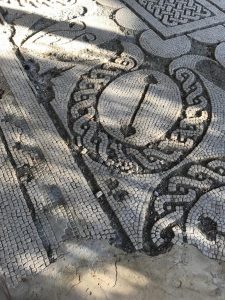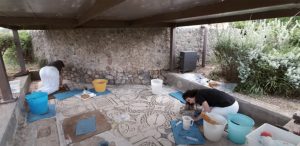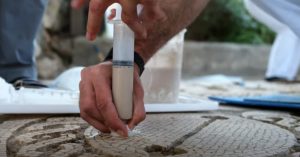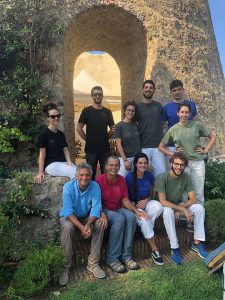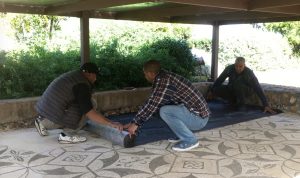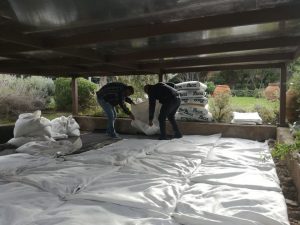The mosaics
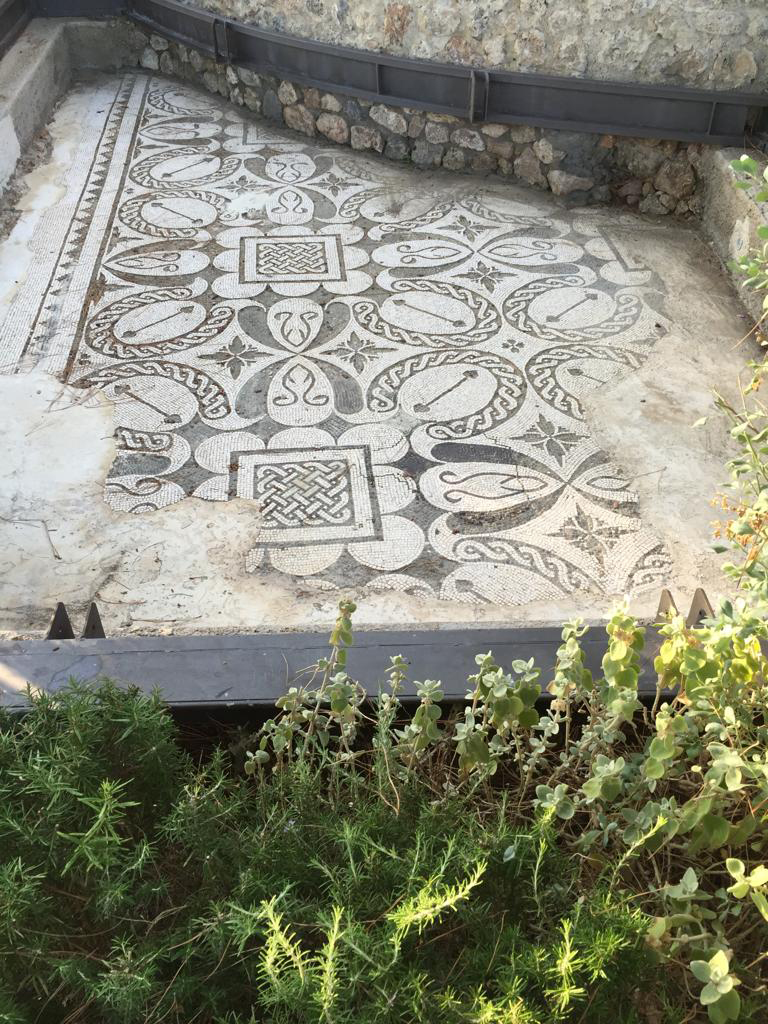 The black and white mosaic floors discovered in 2001 refer to two phases of the building: an older mosaic with very small tesserae, of which only a black band remains on a white background, pertains to the late Republican phase; on top of this is a second-phase floor, again in black and white mosaic (24 square meters), with larger tesserae and decorative patterns characteristic of the first half of the 2nd century AD. In the adjacent room, at the foot of the tower whose foundations cut and reduce its original extension, a contemporary mosaic (8 square meters) with similar patterns is conserved.
The black and white mosaic floors discovered in 2001 refer to two phases of the building: an older mosaic with very small tesserae, of which only a black band remains on a white background, pertains to the late Republican phase; on top of this is a second-phase floor, again in black and white mosaic (24 square meters), with larger tesserae and decorative patterns characteristic of the first half of the 2nd century AD. In the adjacent room, at the foot of the tower whose foundations cut and reduce its original extension, a contemporary mosaic (8 square meters) with similar patterns is conserved.
These second century mosaics are finely decorated with interwoven stylized geometric and vegetal elements.
In the years 2002-2003 various restoration and maintenance interventions were carried out on the mosaics by the Opificio delle Pietre Dure of Florence with the direction of the Archaeological Superintendence of Tuscany. These interventions aimed at consolidating, cleaning and reintegrating the mosaic in situ. The largest second-century mosaic was instead detached, re-applied on aluminum honeycomb panels and re-positioned in the original location.
Despite the presence of protective coverings, the mosaics continued to be affected by structural decay and in 2015 a new extraordinary maintenance intervention was carried out.
